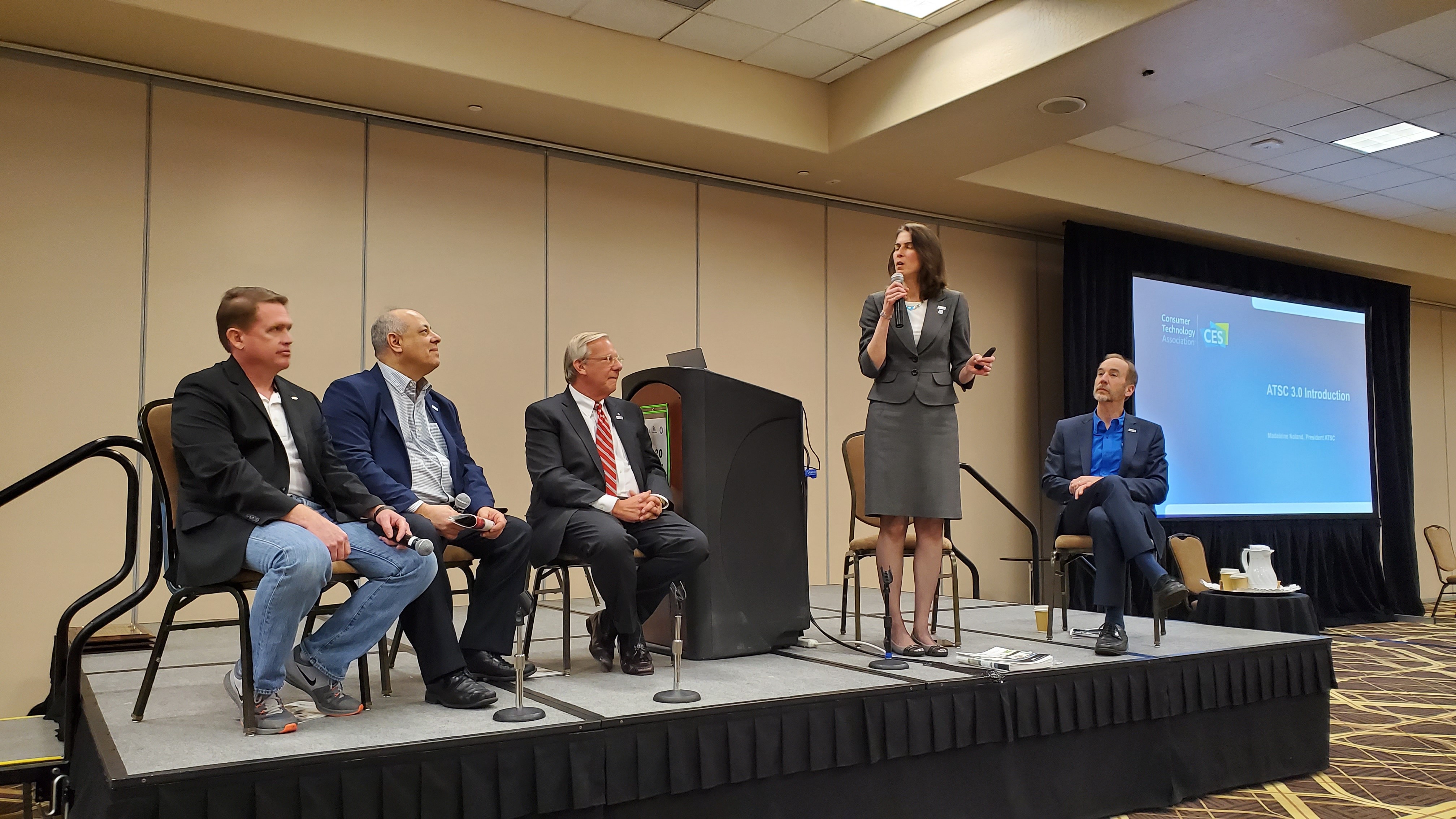Twenty 3.0 Consumer Receivers Coming in 2020, Says ATSC President
LAS VEGAS—The 10-year slog taking a new generation of digital television broadcasting from a mere concept to a complete system capable of delivering IP-based video and other services to receivers in the U.S. homes is ending as 20 actual NextGen TV receivers are debuting this week at the 2020 Consumer Electronics Show—effectively closing the loop in the ATSC 3.0 ecosystem that long concerned broadcasters and fueled naysayers.

Speaking at an IEEE-sponsored event Jan. 6, the day before the opening of this year’s consumer electronics confab, Madeleine Noland, president of the Advanced Television Systems Committee, told those attending the session that 20 NextGen TVs [the consumer-facing marketing designation for ATSC 3.0 capable sets] will be announced at CES 2020.
Noland was joined on the stage by John Taylor, senior vice president of Public Affairs at LG Electronics; Dan Schinasi, director, Product Planning, Consumer Electronics Product Marketing, at Samsung; and Luke Fay, senior manager, Technology Standards, at Sony. Brian Markwalter, senior vice president at the Consumer Electronics Association, moderated the panel.
Earlier in the day, LG Electronics announced six new NextGen TV models ranging in size from 55 to 88 inches, which are expected to reach market in the second quarter. The day before, Samsung announced it would support NextGen TV in its full line of 8K products, ranging in size from 55 to 85 inches. The sets are expected to become available in spring 2020, said Schinasi.
(While the ATSC 3.0 standard could one-day be used to support 8K broadcasting, its highest supported resolution at the moment is 4K UHD.)
Sony’s Fay declined to provide any information about possible NextGen TV introductions, instead referring those at the session to attend the company’s press conference later in the day. Sony eventually debuted its X900H model that is NextGen TV-compatible.
Recalling a few years ago when he was walking on the roof of the Las Vegas Convention Center to mount an antenna to receive an ATSC 3.0 signal transmitted by the Sinclair Broadcast Group station from Black Mountain, LG’s Taylor emphasized that ATSC 3.0 is no-longer a work in progress. “Now it is real with real products and services coming on the air,” he said during the session.
The professional video industry's #1 source for news, trends and product and tech information. Sign up below.
Schinasi mentioned another sign that ATSC 3.0 consumer equipment is becoming a reality during the session. “From the marketing side, what’s a little bit unique here is for marketing this, ATSC 3.0 is the technical standard, for marketing this [the name] is NextGen TV. And through the efforts of CTA, the industry has gotten together a common name, a common logo, across CE companies, broadcasters, NAB, TV broadcast groups. Everyone will be marketing that, so that’s an important element to really help this get off the ground.”
With the news that 20 NextGen TV models are being announced at CES 2020, the reality of 3.0 coming to fruition is sinking in. Noland recalled a conversation she had with a “very prominent broadcaster” prior to the session.
“He [the broadcaster} said, ‘Oh my God, we have our work cut out for us,’” said Noland.
“The TV guys have really done a great job…,” she said. “The broadcasters are very excited about this. They know there is going to be product on the market. The product is going to be marketed to consumers, and there had better be something to watch,” she said.
For a comprehensive source of TV Technology’s ATSC 3.0 coverage, see ourATSC3 silo.
Phil Kurz is a contributing editor to TV Tech. He has written about TV and video technology for more than 30 years and served as editor of three leading industry magazines. He earned a Bachelor of Journalism and a Master’s Degree in Journalism from the University of Missouri-Columbia School of Journalism.

